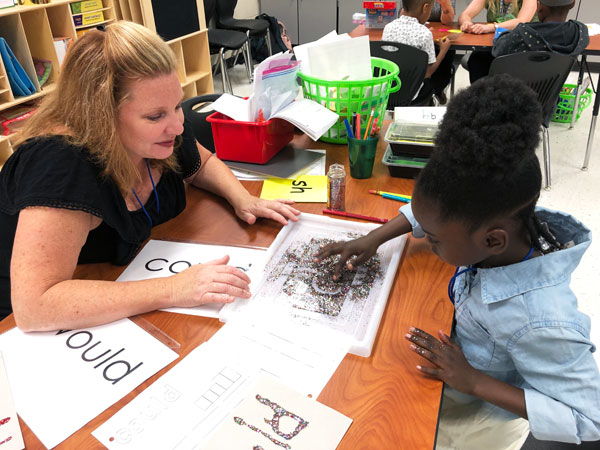
REAP’s professional development program is firmly rooted in Structured Literacy. REAP’s program includes instructional strategies based on the Orton-Gillingham (OG) Approach. OG is a multisensory, systematic, and direct approach to phonics instruction. This intensive training method is renowned for improving reading success in all students—especially those who struggle. The OG approach draws from a body of time-tested knowledge and practice that has been validated over the past 70 years. The OG approach is founded on scientifically based evidence about three core issues:
- How humans learn to read and write;
- Why a significant number have difficulty in doing so;
- Which instructional practices are best suited for teaching such persons to read and write.
REAP makes OG-based training even better
REAP’s Structured Literacy training extends beyond the OG methodology, adding tools and strategies developed specifically for success in the public school environment. Teachers learn research-based approaches that improve reading proficiency in all children.
“I have been teaching for 20 years, and I thought I had the best strategies to teach struggling readers. I did not. After taking this course, I now feel totally equipped to turn nonreaders into readers.”
Structured Literacy is marked by several elements
- Phonological Awareness
- Phonics
- Syllable Instruction
- Morphology
- Syntax
- Semantics
- Systematic & Cumulative
- Explicit Instruction
- Diagnostic Teaching
More about Structured Literacy
What is Structured Literacy? A primer on effective reading instruction from the International Dyslexia Association
Structured Literacy: an Introductory Guide: This document gives a more detailed look at Structured Literacy, who benefits, why it’s important, and why teachers need training.
Per the International Dyslexia Association, Structured Literacy is not designed to replace Orton-Gillingham or other terms in common use. It’s an umbrella term designed to describe these instructional components.
REAP instruction follows the Simple View of Reading (presented by Gough and Tunmer in 1986):
Decoding (D) x Language Comprehension (LC) = Reading Comprehension (RC)
“The Simple View formula has been supported and validated by a number of research studies.” This comes from an excellent article that describes in detail the importance of this formula in reading instruction.
Article info: The Simple View of Reading: Research of Importance to All Educators by Linda Farrell, Marcia Davidson, Michael Hunter, Tina Osenga

